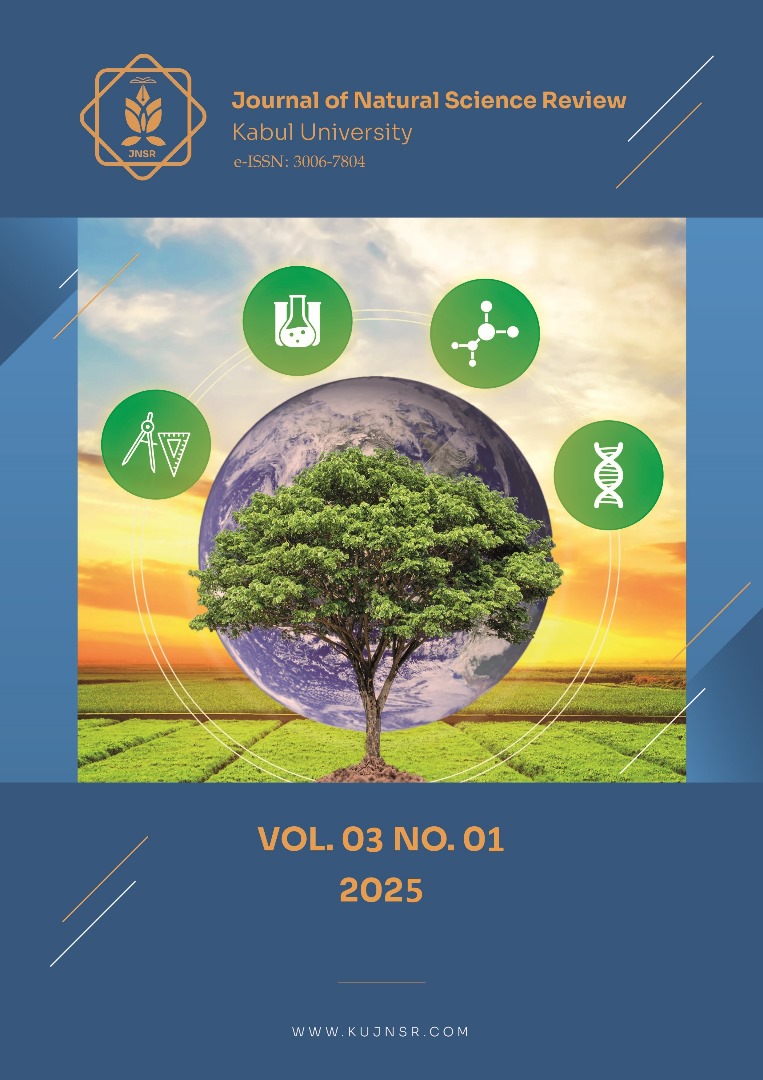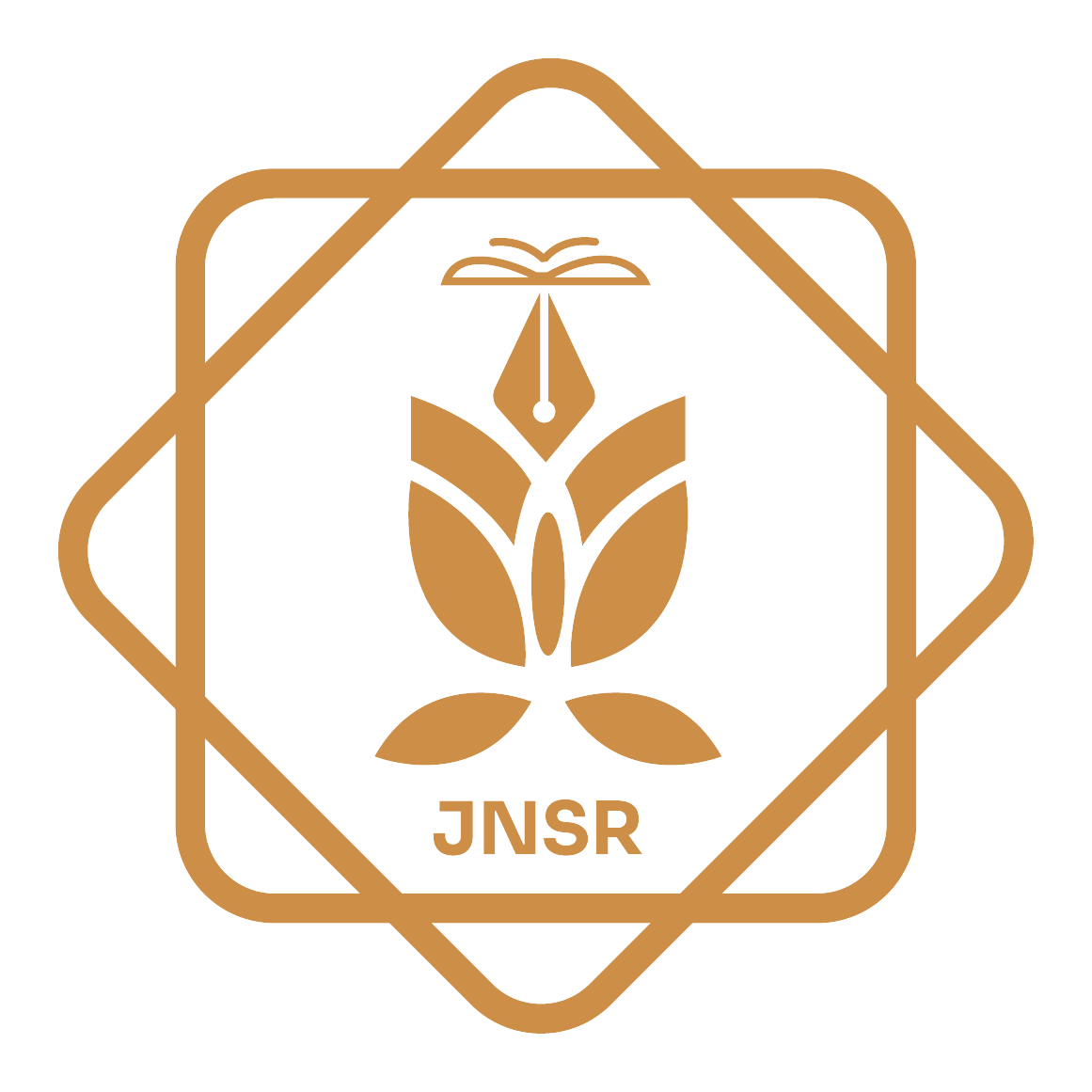Residue and Human Risk: A Reassessment of Aminoglycoside Residues in Edible Tissues
DOI:
https://doi.org/10.62810/jnsr.v3i1.187Keywords:
Aminoglycosides, Toxicity risks, Drug residues, Pharmacokinetics, Food safety, Withdrawal PeriodsAbstract
Aminoglycosides are a group of antibiotics widely used in both human and veterinary medicine, primarily for the treatment of bacterial infections. These drugs, including gentamicin, neomycin, and tobramycin, are poorly absorbed when taken orally and are therefore primarily administered via injection, although oral formulations are also available for the treatment of certain enteral infections. The primary concern with the use of aminoglycosides in veterinary medicine, especially in food-producing animals, is the potential risk for drug residues in products such as meat, milk, and eggs, staples of the human diet. Antibiotic residues can be harmful to humans, potentially causing adverse effects or contributing to antimicrobial resistance (AMR). However, the pharmacokinetics of aminoglycosides, particularly their limited absorption when ingested orally, raise significant questions about the justification for current withdrawal times. Since these drugs are poorly absorbed by the gastrointestinal tract, the risk of residue accumulation capable of producing adverse effects in consumers is minimal. The aim of this review is to investigate whether current withdrawal times for aminoglycosides, particularly when residues are ingested orally by humans, are scientifically justified. The review evaluates the pharmacokinetic profiles, regulatory guidelines, and the associated risks of drug residues from oral exposure. The findings suggest that the risk of residue-induced adverse effects is negligible, as oral aminoglycosides are poorly absorbed and primarily act locally within the gastrointestinal system. Therefore, the review argues that current withdrawal times may be unnecessary and need to be reevaluated. Further research on residue persistence in food products following oral administration is necessary to optimize withdrawal guidelines.
Downloads
References
Abushaheen, M. A., Fatani, A. J., Alosaimi, M., Mansy, W., George, M., Acharya, S., Rathod, S., Divakar, D. D., Jhugroo, C., & Vellappally, S. (2020). Antimicrobial resistance, mechanisms and its clinical significance. Disease-a-Month, 66(6), 100971. https://doi.org/DOI: 10.1016/j.disamonth.2020.100971 DOI: https://doi.org/10.1016/j.disamonth.2020.100971
Adeniyi, A. S. (2019). Antibiotics and Drug Pharmacology. Acta Scientific Pharmaceutical Sciences, 3(11), 43–49. https://doi.org/10.31080/asps.2019.03.0424 DOI: https://doi.org/10.31080/ASPS.2019.03.0424
Almeida, A., Duarte, S., Nunes, R., Rocha, H., Pena, A., & Meisel, L. (2014). Human and veterinary antibiotics used in Portugal-A ranking for ecosurveillance. Toxics, 2(2), 188–225. https://doi.org/10.3390/toxics2020188 DOI: https://doi.org/10.3390/toxics2020188
Arezzo, A., Mistrangelo, M., Bonino, M. A., Salusso, P., Forcignanò, E., Vettoretto, N., Botteri, E., Cillara, N., Ottonello, R., Testa, V., De Rosa, F. G., Corcione, S., Passera, R., & Morino, M. (2021). Oral neomycin and bacitracin are effective in preventing surgical site infections in elective colorectal surgery: a multicentre, randomized, parallel, single-blinded trial (COLORAL-1). Updates in Surgery, 73(5), 1775–1786. https://doi.org/10.1007/s13304-021-01112-5 DOI: https://doi.org/10.1007/s13304-021-01112-5
Arsène, M. M. J., Davares, A. K. L., Viktorovna, P. I., Andreevna, S. L., Sarra, S., Khelifi, I., & Sergueïevna, D. M. (2022). The public health issue of antibiotic residues in food and feed: Causes, consequences, and potential solutions. Veterinary World, 15(3), 662–671. https://doi.org/10.14202/vetworld.2022.662-671 DOI: https://doi.org/10.14202/vetworld.2022.662-671
Arunvikram, K., Mohanty, I., Sardar, K. K., Palai, S., Sahoo, G., & Patra, R. C. (2014). Adverse drug reaction and toxicity caused by commonly used antimicrobials in canine practice. Veterinary World, 7(5), 299–305. https://doi.org/10.14202/vetworld.2014.299-305 DOI: https://doi.org/10.14202/vetworld.2014.299-305
Avis, T., Wilson, F. X., Khan, N., Mason, C. S., & Powell, D. J. (2021). Targeted microbiome-sparing antibiotics. Drug Discovery Today, 26(9), 2198–2203. https://doi.org/10.1016/j.drudis.2021.07.016 DOI: https://doi.org/10.1016/j.drudis.2021.07.016
Bailey, J., Oliveri, A., & Levin, E. (2013). New developments in aminoglycoside therapy and ototoxicity. Bone, 23(1), 1–7. https://doi.org/10.1016/j.heares.2011.05.008.New
Barnhill, A. E., Brewer, M. T., & Carlson, S. A. (2012). Adverse effects of antimicrobials via predictable or idiosyncratic inhibition of host mitochondrial components. Antimicrobial Agents and Chemotherapy, 56(8), 4046–4051. https://doi.org/10.1128/AAC.00678-12 DOI: https://doi.org/10.1128/AAC.00678-12
Ben, Y., Fu, C., Hu, M., Liu, L., Wong, M. H., & Zheng, C. (2019). Human health risk assessment of antibiotic resistance associated with antibiotic residues in the environment: A review. Environmental Research, 169(July 2018), 483–493. https://doi.org/10.1016/j.envres.2018.11.040 DOI: https://doi.org/10.1016/j.envres.2018.11.040
Bergwerff, A. A. (1998). HPLC determination of residues of spectinomycin in various tissue types from husbandry animals. Analyst, 123(10), 2139–2144. https://doi.org/10.1039/a804511i DOI: https://doi.org/10.1039/a804511i
Beyene, T. (2015). Veterinary Drug Residues in Food-animal Products: Its Risk Factors and Potential Effects on Public Health. Journal of Veterinary Science & Technology, 07(01), 1–7. https://doi.org/10.4172/2157-7579.1000285 DOI: https://doi.org/10.4172/2157-7579.1000285
Bhattacharjee, A., Chakraborty, A., Chaulya, N. C., & Mukhopadhyay, G. (2023). Advances in in vivo Non-invasive Delivery of Gentamicin. Indian Journal of Pharmaceutical Education and Research, 57(3), 648–657. https://doi.org/10.5530/ijper.57.3.79 DOI: https://doi.org/10.5530/ijper.57.3.79
Boobis, A., Cerniglia, C., Chicoine, A., Fattori, V., Lipp, M., Reuss, R., Verger, P., & Tritscher, A. (2017). Characterizing chronic and acute health risks of residues of veterinary drugs in food: latest methodological developments by the joint FAO/WHO expert committee on food additives. Critical Reviews in Toxicology, 47(10), 885–899. https://doi.org/10.1080/10408444.2017.1340259 DOI: https://doi.org/10.1080/10408444.2017.1340259
Brinkac, L., Voorhies, A., Gomez, A., & Nelson, K. E. (2017). The Threat of Antimicrobial Resistance on the Human Microbiome. Microbial Ecology, 74(4), 1001–1008. https://doi.org/10.1007/s00248-017-0985-z DOI: https://doi.org/10.1007/s00248-017-0985-z
Bumbăcea, R. S., Udrea, M. R., Ali, S., & Bojincă, V. C. (2024). Balancing Benefits and Risks: A Literature Review on Hypersensitivity Reactions to Human G-CSF (Granulocyte Colony-Stimulating Factor). International Journal of Molecular Sciences, 25(9). https://doi.org/10.3390/ijms25094807 DOI: https://doi.org/10.3390/ijms25094807
Caneschi, A., Bardhi, A., Barbarossa, A., & Zaghini, A. (2023). The Use of Antibiotics and Antimicrobial Resistance in Veterinary Medicine, a Complex Phenomenon: A Narrative Review. Antibiotics, 12(3). https://doi.org/10.3390/antibiotics12030487 DOI: https://doi.org/10.3390/antibiotics12030487
Cangiano, L. R., Ipharraguerre, I. R., Guan, L. L., Buss, L. N., Amorin-Hegedus, R., Chirivi, M., Contreras, G. A., & Steele, M. A. (2023). Prophylactic feeding of neomycin to Holstein calves alters gut microbiota, bile acid metabolism, and expression of genes involved in immunometabolic regulation. Frontiers in Microbiology, 14(August), 1–14. https://doi.org/10.3389/fmicb.2023.1210142 DOI: https://doi.org/10.3389/fmicb.2023.1210142
Canton, L., Lanusse, C., & Moreno, L. (2021). Rational pharmacotherapy in infectious diseases: Issues related to drug residues in edible animal tissues. Animals, 11(10), 1–32. https://doi.org/10.3390/ani11102878 DOI: https://doi.org/10.3390/ani11102878
Chiang, C. Y., Van Deun, A., Trébucq, A., Piubello, A., Schwoebel, V., & Rieder, H. L. (2019). Multidrug-resistant tuberculosis. The Lancet, 394(10195), 299. https://doi.org/10.1016/S0140-6736(19)30046-7 DOI: https://doi.org/10.1016/S0140-6736(19)30046-7
Childs-Kean, L. M., Shaeer, K. M., Varghese Gupta, S., & Cho, J. C. (2019). Aminoglycoside Allergic Reactions. Pharmacy, 7(3), 124. https://doi.org/10.3390/pharmacy7030124 DOI: https://doi.org/10.3390/pharmacy7030124
Colopi, A., Guida, E., Cacciotti, S., Fuda, S., Lampitto, M., Onorato, A., Zucchi, A., Balistreri, C. R., Grimaldi, P., & Barchi, M. (2024). Dietary Exposure to Pesticide and Veterinary Drug Residues and Their Effects on Human Fertility and Embryo Development: A Global Overview. International Journal of Molecular Sciences, 25(16). https://doi.org/10.3390/ijms25169116 DOI: https://doi.org/10.3390/ijms25169116
Concordet, D., & Toutain, P. L. (1997). The withdrawal time estimation of veterinary drugs: A non-parametric approach. Journal of Veterinary Pharmacology and Therapeutics, 20(5), 374–379. https://doi.org/10.1046/j.1365-2885.1997.00077.x DOI: https://doi.org/10.1046/j.1365-2885.1997.00077.x
Darlow, C. A., da Costa, R. M. A., Ellis, S., Franceschi, F., Sharland, M., Piddock, L., Das, S., & Hope, W. (2021). Potential Antibiotics for the Treatment of Neonatal Sepsis Caused by Multidrug-Resistant Bacteria. Pediatric Drugs, 23(5), 465–484. https://doi.org/10.1007/s40272-021-00465-z DOI: https://doi.org/10.1007/s40272-021-00465-z
Desa, Y. M. and G., & Jimma. (2020). Public Health Importance of Veterinary Drug Residues in Food Animals. 15(1), 39–44. https://doi.org/10.5829/idosi.ajh.2020.01.11
Dobrek, L. (2023). A Synopsis of Current Theories on Drug-Induced Nephrotoxicity. Life, 13(2). https://doi.org/10.3390/life13020325 DOI: https://doi.org/10.3390/life13020325
Dragostin, I., Dragostin, O. M., Lisă, E. L., Stefan, S. C., Zamfir, A. S., Diaconu, C., & Zamfir, C. L. (2022). Drugs frequently involved in inducing hypersensitivity reactions. Drug and Chemical Toxicology, 45(2), 617–624. https://doi.org/10.1080/01480545.2020.1746331 DOI: https://doi.org/10.1080/01480545.2020.1746331
Dudek-Wicher, R. K., Junka, A., & Bartoszewicz, M. (2018). The influence of antibiotics and dietary components on gut microbiota. Przeglad Gastroenterologiczny, 13(2), 85–92. https://doi.org/10.5114/pg.2018.76005 DOI: https://doi.org/10.5114/pg.2018.76005
Edlow, J. A., & Newman-Toker, D. E. (2015). Medical and Nonstroke Neurologic Causes of Acute, Continuous Vestibular Symptoms. Neurologic Clinics, 33(3), 699–716. https://doi.org/10.1016/j.ncl.2015.04.002 DOI: https://doi.org/10.1016/j.ncl.2015.04.002
Gehring, R., Haskell, S. R., Payne, M. A., Craigmill, A. L., Webb, A. I., & Riviere, J. E. (2005). Aminoglycoside residues in food of animal origin. Journal of the American Veterinary Medical Association, 227(1), 63–66. https://doi.org/10.2460/javma.2005.227.63 DOI: https://doi.org/10.2460/javma.2005.227.63
Herago, T. (2021). Drug Residues in Foods of Animal Origin and Their Impact on Human Health: Review. Food Science and Quality Management, 108, 13–21. https://doi.org/10.7176/fsqm/108-02
Herrero-Fresno, A., Zachariasen, C., Hansen, M. H., Nielsen, A., Hendriksen, R. S., Nielsen, S. S., & Olsen, J. E. (2016). Apramycin treatment affects selection and spread of a multidrug-resistant Escherichia coli strain able to colonize the human gut in the intestinal microbiota of pigs. Veterinary Research, 47(1), 1–10. https://doi.org/10.1186/s13567-015-0291-z DOI: https://doi.org/10.1186/s13567-015-0291-z
Humes, H. D. (1988). Aminoglycoside nephrotoxicity. Kidney International, 33(4), 900–911. https://doi.org/10.1038/ki.1988.83 DOI: https://doi.org/10.1038/ki.1988.83
Hutchin, T., & Cortopassi, G. (1994). Proposed molecular and cellular mechanism for aminoglycoside ototoxicity. Antimicrobial Agents and Chemotherapy, 38(11), 2517–2520. https://doi.org/10.1128/AAC.38.11.2517 DOI: https://doi.org/10.1128/AAC.38.11.2517
Isgren, C. M. (2022). Improving clinical outcomes via responsible antimicrobial use in horses. Equine Veterinary Education, 34(9), 482–492. https://doi.org/10.1111/eve.13502 DOI: https://doi.org/10.1111/eve.13502
Jaimee, G., & Halami, P. M. (2016). Emerging resistance to aminoglycosides in lactic acid bacteria of food origin—an impending menace. Applied Microbiology and Biotechnology, 100(3), 1137–1151. https://doi.org/10.1007/s00253-015-7184-y DOI: https://doi.org/10.1007/s00253-015-7184-y
Jalal, H., Para, P. A., Ganguly, S., Gogai, M., Bhat, M. M., Praveen, P. K., & Bukhari1, and S. A. (2015). CHEMICAL RESIDUES IN MEAT AND MEAT PRODUCTS: A REVIEW. Wjpls.Org, 1(3), 149–159. http://wjpls.org/download/article/24022018/1519795554.pdf
Jana, S., & Deb, J. K. (2006). Molecular understanding of aminoglycoside action and resistance. Applied Microbiology and Biotechnology, 70(2), 140–150. https://doi.org/10.1007/s00253-005-0279-0 DOI: https://doi.org/10.1007/s00253-005-0279-0
Jiang, M., Karasawa, T., & Steyger, P. S. (2017). Aminoglycoside-induced cochleotoxicity: A review. Frontiers in Cellular Neuroscience, 11(October), 1–14. https://doi.org/10.3389/fncel.2017.00308 DOI: https://doi.org/10.3389/fncel.2017.00308
Kaloyanides, G. J., & Pastoriza-munoz, E. (1980). Aminoglyco side nephrotoxicity. Kidney International, 18(5), 571–582. https://doi.org/10.1038/ki.1980.175 DOI: https://doi.org/10.1038/ki.1980.175
Kan, C. A., & Meijer, G. A. L. (2007). The risk of contamination of food with toxic substances present in animal feed. Animal Feed Science and Technology, 133(1–2), 84–108. https://doi.org/10.1016/j.anifeedsci.2006.08.005 DOI: https://doi.org/10.1016/j.anifeedsci.2006.08.005
Karunarathna, I. (2024). The Clinical Use of Gentamicin : Indications , Mechanism of Action , and Key Considerations. August. https://doi.org/10.13140/RG.2.2.24754.00969
Kohanski, M. A., Dwyer, D. J., & Collins, J. J. (2010). How antibiotics kill bacteria: From targets to networks. Nature Reviews Microbiology, 8(6), 423–435. https://doi.org/10.1038/nrmicro2333 DOI: https://doi.org/10.1038/nrmicro2333
Krenn, M., Grisold, A., Wohlfarth, P., Rath, J., Cetin, H., Koneczny, I., & Zimprich, F. (2020). Pathomechanisms and Clinical Implications of Myasthenic Syndromes Exacerbated and Induced by Medical Treatments. Frontiers in Molecular Neuroscience, 13(August). https://doi.org/10.3389/fnmol.2020.00156 DOI: https://doi.org/10.3389/fnmol.2020.00156
Lees, P., & Toutain, P. (2012). The role of pharmacokinetics in veterinary drug residues. https://doi.org/10.1002/dta.1374 DOI: https://doi.org/10.1002/dta.1374
Ma, W., Yang, L., & He, L. (2018). Overview of the detection methods for equilibrium dissociation constant KD of drug-receptor interaction. Journal of Pharmaceutical Analysis, 8(3), 147–152. https://doi.org/10.1016/j.jpha.2018.05.001 DOI: https://doi.org/10.1016/j.jpha.2018.05.001
Mancuso, G., Midiri, A., Gerace, E., & Biondo, C. (2021). Pathogens-10-01310-V2.Pdf. Pathogens, 10(1310), 1–14. DOI: https://doi.org/10.3390/pathogens10101310
Mattie, H., Craig, W. A., & Pechere, J. C. (1989). Review Determinants of efficacy and toxicity of aminoglycosides. 281–293. DOI: https://doi.org/10.1093/jac/24.3.281
McInnes, R. S., McCallum, G. E., Lamberte, L. E., & van Schaik, W. (2020). Horizontal transfer of antibiotic resistance genes in the human gut microbiome. Current Opinion in Microbiology, 53, 35–43. https://doi.org/10.1016/j.mib.2020.02.002 DOI: https://doi.org/10.1016/j.mib.2020.02.002
Menkem, Z. E., Ngangom, B. L., Tamunjoh, S. S. A., & Boyom, F. F. (2019). Antibiotic residues in food animals: Public health concern. Acta Ecologica Sinica, 39(5), 411–415. https://doi.org/10.1016/j.chnaes.2018.10.004 DOI: https://doi.org/10.1016/j.chnaes.2018.10.004
Mesfin, Y. M., Mitiku, B. A., & Tamrat Admasu, H. (2024). Veterinary Drug Residues in Food Products of Animal Origin and Their Public Health Consequences: A Review. Veterinary Medicine and Science, 10(6). https://doi.org/10.1002/vms3.70049 DOI: https://doi.org/10.1002/vms3.70049
Mohammed, A. S., & Shehasen, M. Z. (2020). Street Food Consumption and Associated Health Risk. International Journal of Research Studies in Agricultural Sciences, 6(7). https://doi.org/10.20431/2454-6224.0607002 DOI: https://doi.org/10.20431/2454-6224.0607002
Nagai, J., Tanaka, H., Nakanishi, N., Tanaka, H., Nakanishi, N., Murakami, T., & Takano, M. (2025). Role of megalin in renal handling of aminoglycosides. 1–2.
Page, S. W., & Gautier, P. (2012). Use of antimicrobial agents in livestock. OIE Revue Scientifique et Technique, 31(1), 145–188. https://doi.org/10.20506/rst.31.1.2106 DOI: https://doi.org/10.20506/rst.31.1.2106
Pagkalis, S., Mantadakis, E., Mavros, M. N., Ammari, C., & Falagas, M. E. (2011). Pharmacological considerations for the proper clinical use of aminoglycosides. Drugs, 71(17), 2277–2294. https://doi.org/10.2165/11597020-000000000-00000 DOI: https://doi.org/10.2165/11597020-000000000-00000
Pancu, D. F., Scurtu, A., Macasoi, I. G., Marti, D., Mioc, M., Soica, C., Coricovac, D., Horhat, D., Poenaru, M., & Dehelean, C. (2021). Antibiotics : Conventional Therapy and Natural Compounds with Antibacterial Activity — A Pharmaco-Toxicological Screening. https://doi.org/DOI: 10.3390/antibiotics10040401 DOI: https://doi.org/10.3390/antibiotics10040401
Passantino, A., & Russo, C. (2008). Maximum residue levels of veterinary medicines in relation to food safety: European community legislation and ethical aspects. Journal Fur Verbraucherschutz Und Lebensmittelsicherheit, 3(4), 351–358. https://doi.org/10.1007/s00003-008-0369-x DOI: https://doi.org/10.1007/s00003-008-0369-x
Paterson, D. L., Robson, J. M. B., & Wagener, M. M. (1998). Risk factors for toxicity in elderly patients given aminoglycosides once daily. Journal of General Internal Medicine, 13(11), 735–739. https://doi.org/10.1046/j.1525-1497.1998.00224.x DOI: https://doi.org/10.1046/j.1525-1497.1998.00224.x
Porter, C. J. H., Trevaskis, N. L., & Charman, W. N. (2007). Lipids and lipid-based formulations: Optimizing the oral delivery of lipophilic drugs. Nature Reviews Drug Discovery, 6(3), 231–248. https://doi.org/10.1038/nrd2197 DOI: https://doi.org/10.1038/nrd2197
Raihan, R., Wafa, A., Zhakfar, A. M., & Sudhakar CK. (2024). Oral Disintegrating Films: A Review. Journal of Natural Science Review, 2(2), 60–74. https://doi.org/10.62810/jnsr.v2i2.42 DOI: https://doi.org/10.62810/jnsr.v2i2.42
Rana, M. S., Lee, S. Y., Kang, H. J., & Hur, S. J. (2019). Reducing veterinary drug residues in animal products: A review. Food Science of Animal Resources, 39(5), 687–703. https://doi.org/10.5851/kosfa.2019.e65 DOI: https://doi.org/10.5851/kosfa.2019.e65
Rivetti, S., Romano, A., Mastrangelo, S., Attin, G., Maurizi, P., & Ruggiero, A. (2023). Aminoglycosides-Related Ototoxicity : Mechanisms , Risk Factors , and Prevention in Pediatric Patients. June, 1–21. https://doi.org/doi: 10.3390/ph16101353 DOI: https://doi.org/10.3390/ph16101353
Rocha, D. M. G. C., Viveiros, M., Saraiva, M., & Osório, N. S. (2021). The neglected contribution of streptomycin to the tuberculosis drug resistance problem. Genes, 12(12). https://doi.org/10.3390/genes12122003 DOI: https://doi.org/10.3390/genes12122003
Rogers, C., & Petersen, L. (2011). Aminoglycoside-induced balance deficits: A review of vestibulotoxicity. South African Family Practice, 53(5), 419–424. https://doi.org/10.1080/20786204.2011.10874126 DOI: https://doi.org/10.1080/20786204.2011.10874126
Sánchez-borges, M., Thong, B., Blanca, M., Felipe, L., Ensina, C., González-díaz, S., Greenberger, P. A., Jares, E., Jee, Y., Kase-tanno, L., Khan, D., Park, J., Pichler, W., Romano, A., José, M., & Jaén, T. (2013). Hypersensitivity reactions to non beta-lactam antimicrobial agents , a statement of the WAO special committee on drug allergy. 1–23. https://doi.org/doi: 10.1186/1939-4551-6-18 DOI: https://doi.org/10.1186/1939-4551-6-18
Scherman, S., Vaddady, P. K., Zheng, Z., Qi, J., Akbergenov, R., Das, S., Madhura, D. B., Rathi, C., Trivedi, A., Villellas, C., Boshoff, H. I., Gonzalez-juarrero, M., Meibohm, B., & Erik, C. (2014). HHS Public Access. 20(2), 152–158. https://doi.org/10.1038/nm.3458.Spectinamides DOI: https://doi.org/10.1038/nm.3458
Shah, S. R. U., Mahmood, K., & Hameed, A. (2017). Review of google scholar, web of science, and scopus search results: The case of inclusive education research. Library Philosophy and Practice, 2017(1).
Skarzynska, M., Król, B., & Czajka, L. (2020). Ototoxicity As a Side-Effect of Drugs: Literature Review. Journal of Hearing Science, 10(2), 9–19. https://doi.org/10.17430/jhs.2020.10.2.1 DOI: https://doi.org/10.17430/JHS.2020.10.2.1
Snyder, H. (2019). Literature review as a research methodology: An overview and guidelines. Journal of Business Research, 104(July), 333–339. https://doi.org/10.1016/j.jbusres.2019.07.039 DOI: https://doi.org/10.1016/j.jbusres.2019.07.039
Sundram, P., Lloyd, C., & Eri, R. (2024). Addressing residue and resistance in food animals: a policy imperative in Southeast Asia. International Journal of Food Science and Technology, 6746–6757. https://doi.org/10.1111/ijfs.17063 DOI: https://doi.org/10.1111/ijfs.17063
Tadesse, T., & Tadesse, T. (2017). Public Health Impacts of Antibiotic Residues in Foods of Animal Origin: A Review. 7(10), 6–11. www.iiste.org
Tanin, F. A. (2024). Understanding Adverse Drug Effects and the Clinical Pharmacist ’ s Role in Their Management. 2(4), 1–35. DOI: https://doi.org/10.62810/jnsr.v2i4.106
Tello, A., Austin, B., & Telfer, T. C. (2012). Selective pressure of antibiotic pollution on bacteria of importance to public health. Environmental Health Perspectives, 120(8), 1100–1106. https://doi.org/10.1289/ehp.1104650 DOI: https://doi.org/10.1289/ehp.1104650
Toutain, P. L. (2010). How to extrapolate a withdrawal time from an EHSLC published detection time: A Monte Carlo simulation appraisal. Equine Veterinary Journal, 42(3), 248–254. https://doi.org/10.1111/j.2042-3306.2010.00028.x DOI: https://doi.org/10.1111/j.2042-3306.2010.00028.x
Tufa, T. B., Guta, A., Tufa, T. B., Beyi, A. F., & Regassa, F. (2021). Efficacy of different brands of penicillin-streptomycin against Staphylococcus aureus: the clinicians’ myths and the realities (Preprints). Research Square. DOI: https://doi.org/10.21203/rs.3.rs-145838/v1
Van Duijkeren, E., Schwarz, C., Bouchard, D., Catry, B., Pomba, C., Baptiste, K. E., Moreno, M. A., Rantala, M., Ružauskas, M., Sanders, P., Teale, C., Wester, A. L., Ignate, K., Kunsagi, Z., & Jukes, H. (2019). The use of aminoglycosides in animals within the EU: Development of resistance in animals and possible impact on human and animal health: A review. Journal of Antimicrobial Chemotherapy, 74(9), 2480–2496. https://doi.org/10.1093/jac/dkz161 DOI: https://doi.org/10.1093/jac/dkz161
Vernocchi, P., Chierico, F. Del, & Putignani, L. (2020). Gut microbiota metabolism and interaction with food components. International Journal of Molecular Sciences, 21(10). https://doi.org/10.3390/ijms21103688 DOI: https://doi.org/10.3390/ijms21103688
Wassenaar, T. M. (2005). Use of antimicrobial agents in veterinary medicine and implications for human health. Critical Reviews in Microbiology, 31(3), 155–169. https://doi.org/10.1080/10408410591005110 DOI: https://doi.org/10.1080/10408410591005110
Webster, C. M., & Shepherd, M. (2023). A mini-review: environmental and metabolic factors affecting aminoglycoside efficacy. World Journal of Microbiology and Biotechnology, 39(1), 1–13. https://doi.org/10.1007/s11274-022-03445-8 DOI: https://doi.org/10.1007/s11274-022-03445-8
WHO. (2015). Guidance document for WHO monographers and reviewers evaluating veterinary drug residues in food. 6.
Worboys, M., & Toon, E. (2018). Phenylbutazone (Bute, PBZ, EPZ): one drug across two species. History and Philosophy of the Life Sciences, 40(2), 1–24. https://doi.org/10.1007/s40656-018-0191-4 DOI: https://doi.org/10.1007/s40656-018-0191-4
Zad, N., Tell, L. A., Ampadi, R., Xu, X., Riviere, J. E., Baynes, R., Lin, Z., Maunsell, F., Davis, J., & Jaberi-douraki, M. (2023). Development of machine learning algorithms to estimate maximum residue limits for veterinary medicines. Food and Chemical Toxicology, 179(February), 113920. https://doi.org/10.1016/j.fct.2023.113920 DOI: https://doi.org/10.1016/j.fct.2023.113920
Zhang, L., Du, Z., & Gong, S. (2021). Mitochondrial Dysfunction and Sirtuins: Important Targets in Hearing Loss. Neural Plasticity, 2021. https://doi.org/10.1155/2021/5520794 DOI: https://doi.org/10.1155/2021/5520794
Zheng, F., & Zuo, J. (2017). Cochlear hair cell regeneration after noise-induced hearing loss : Does regeneration follow development ? Hearing Research, 349, 182–196. https://doi.org/10.1016/j.heares.2016.12.011 DOI: https://doi.org/10.1016/j.heares.2016.12.011
Downloads
Published
How to Cite
Issue
Section
License
Copyright (c) 2025 Farid Ahmad Tanin

This work is licensed under a Creative Commons Attribution-NonCommercial 4.0 International License.



























